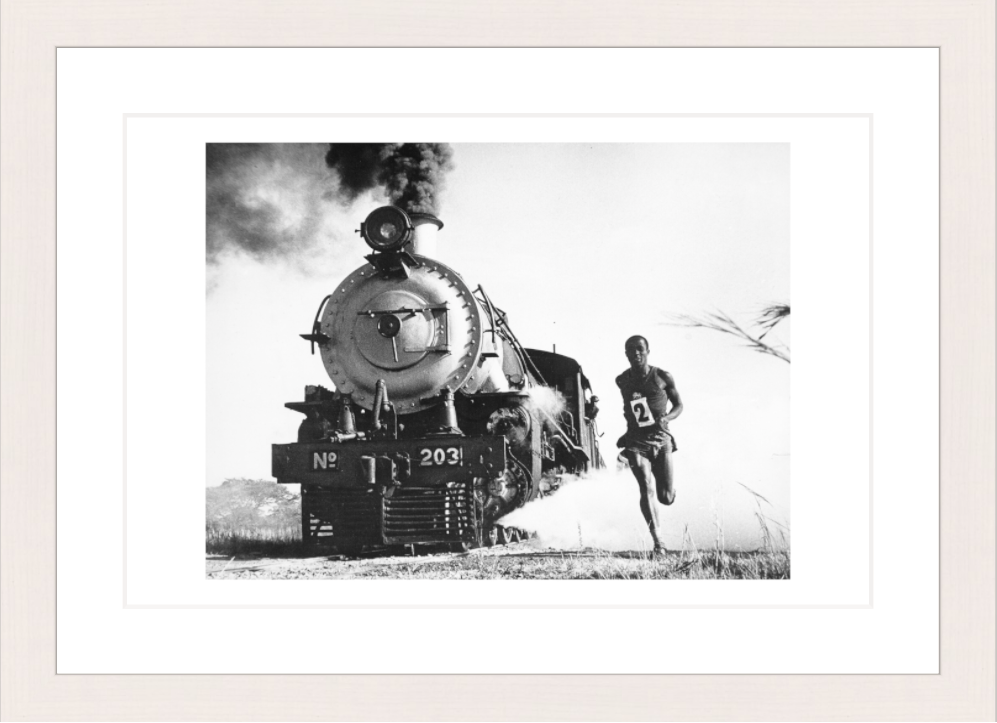David Paynter
David Paynter
1968
Awarded in the 1968 World Press Photo Contest
Couldn't load pickup availability




About the Print
Credits
David Paynter
Caption
Rhodesia (now Zimbabwe), 1968. “It was the relatively precise 26 kilometre distance between the Zimbabwean midland town of Gweru (formerly Gwelo), and the railhead hamlet of Selukwe that was to attract Mexican Olympic Games marathon hopefuls, such the then national champion Mathias Kanda, to test their workout performances by competing against the steam train that plied the route on a twice weekly basis. In the end, though, despite the team being renowned for its multiracial makeup, it was the then government-of-the-day's unacceptable racial policies that resulted in the nation being no longer welcomed.” – David Paynter
Biography
David Paynter (b.1935) was born in Zimbabwe (then Rhodesia) and educated in Cape Town. At the age of 19 he joined the country’s Rhodesia Herald/Sunday Mail group as a cadet photographer, rising to chief photographer within eight years. He later worked for the Johannesburg-based Argus Africa News Service which took him on assignments across the continent until finding himself as an assistant editor of The Cape Argus newspaper in Cape Town.
He has won a number of national and international awards including British Sports Photographer of the Year, British Regional Photographer of the Year, and South Africa’s National Press Award for Enterprising Journalism for his coverage of the aftermath of the eastern Nigeria (Biafran) civil war.
In 2002, Paynter moved to Geneva, Switzerland, where he focused on personalized one-on-one photography workshops and producing collectible-quality prints of his best work. His images were exhibited at the United Nations’ WIPO Gallery and later at the Anières Gallery, both located in Geneva. Much of his collection eventually found a permanent home at the Agliano Private Gallery in the historic village of Agliano in northeast Italy, where it remains to this day.




